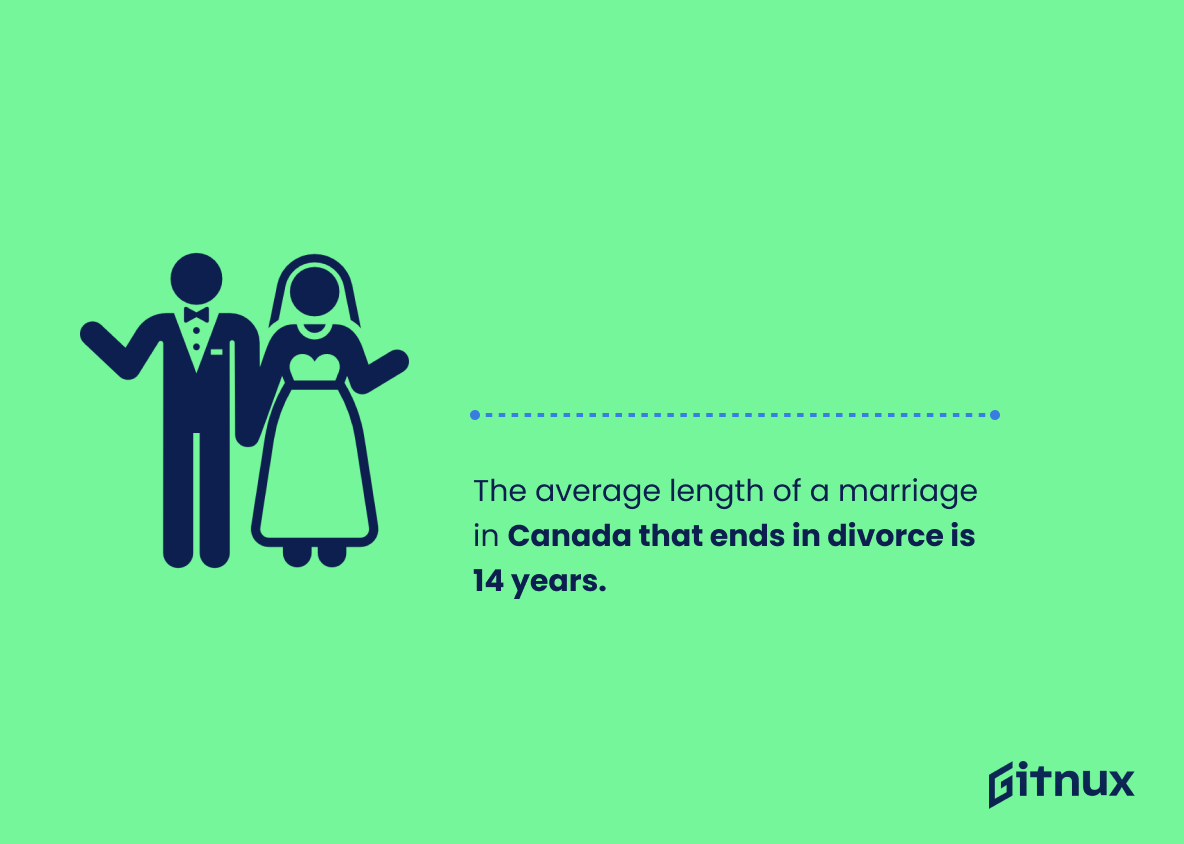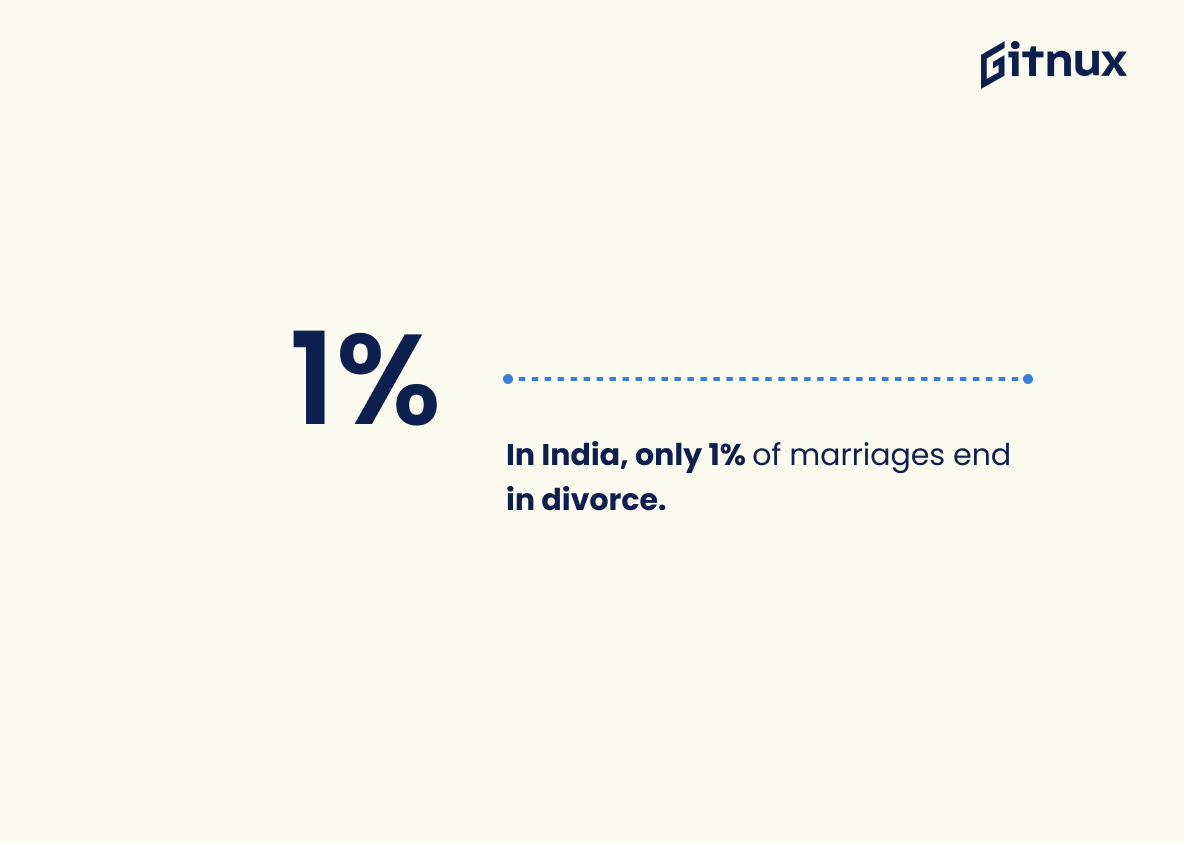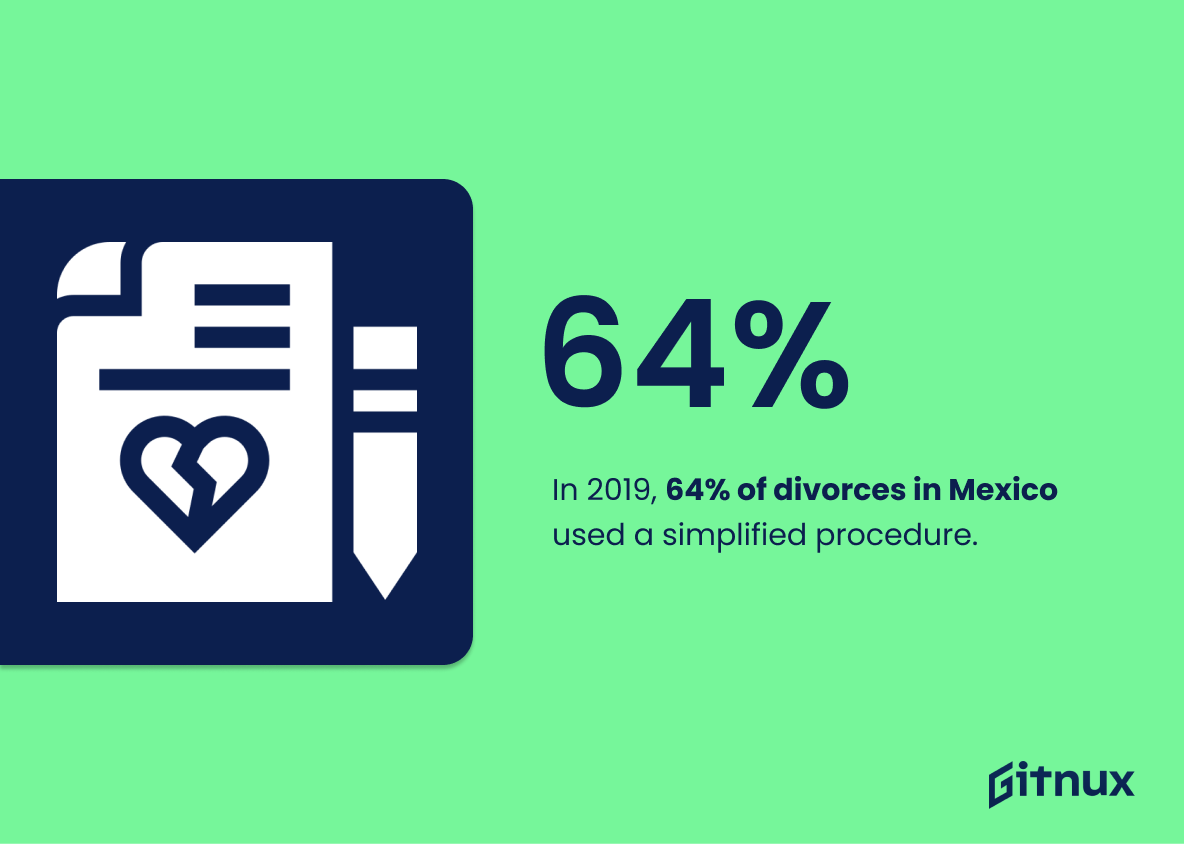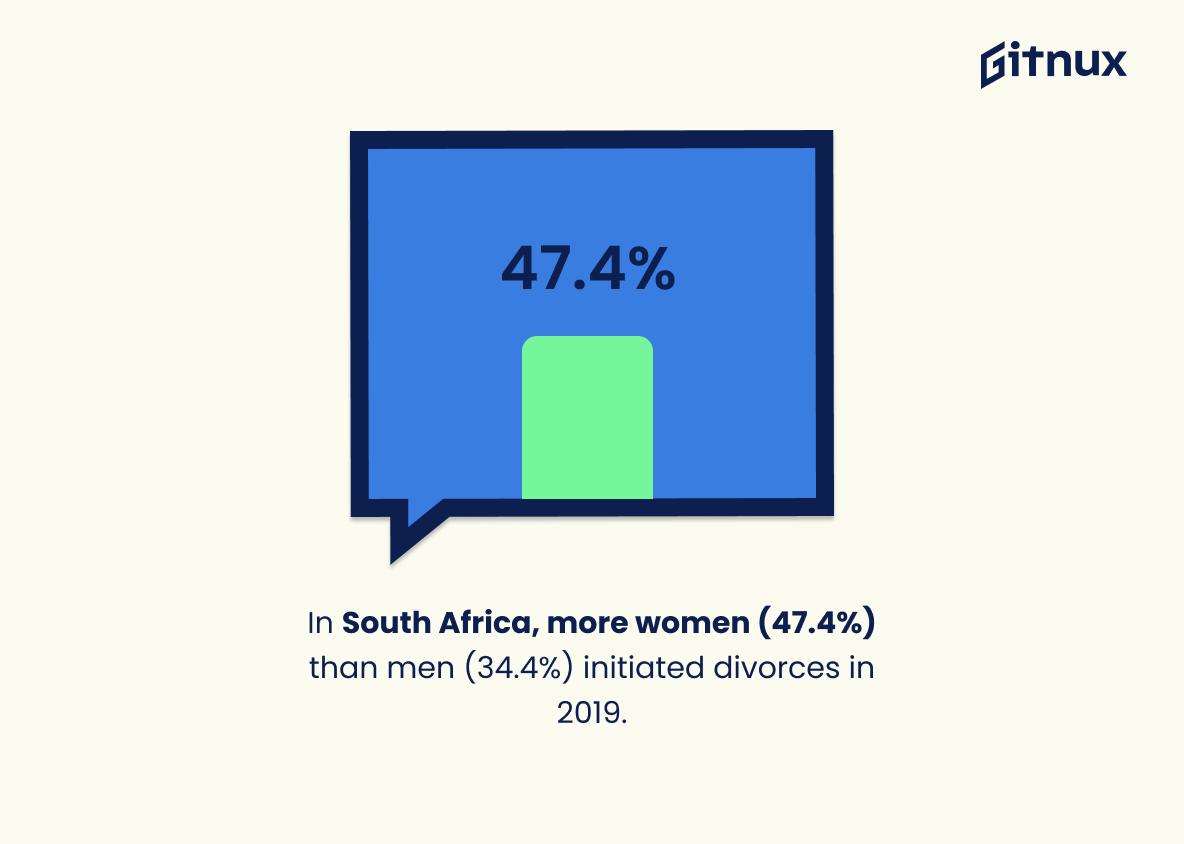Family law is an important area of the legal system that affects many people around the world. This blog post will explore some statistics related to family law in various countries, including divorce rates, child custody arrangements, and domestic violence cases. We’ll look at data from the United States, Canada, UK, Australia, India Indonesia China Mexico and South Africa to get a better understanding of how these issues are handled differently across different cultures. Additionally we’ll examine trends such as pre-marital cohabitation leading to higher divorce rates and gender differences in who initiates divorces. By looking at this information we can gain insight into how family laws vary between nations and what factors may contribute to successful marriages or lead couples towards separation or dissolution of their union.
This statistic is a stark reminder of the prevalence of divorce in the United States. It serves as a reminder that family law is an important and ever-present issue that affects many people. It is a reminder that family law is an important area of law that requires attention and understanding.
Around 50% of children in America will witness their parents’ divorce.
This statistic is a stark reminder of the prevalence of divorce in America, and how it can have a lasting impact on children. It highlights the importance of family law and the need for resources to help families navigate the legal and emotional complexities of divorce. It also serves as a reminder of the importance of providing support to children of divorced parents.
Family Law Statistics Overview
Approximately 42% of marriages in the UK end in divorce.
This statistic is a stark reminder of the prevalence of divorce in the UK, and serves as an important reminder of the need for effective family law. It highlights the importance of understanding the legal implications of marriage and divorce, and the need for couples to be aware of their rights and responsibilities.
About 75% of children with divorced parents live with their mother.
This statistic is a powerful reminder of the prevalence of single-parent households in today’s society. It highlights the importance of Family Law in providing support and guidance to those affected by divorce, and the need for continued advocacy for the rights of children in these situations.
The average length of a marriage in Canada that ends in divorce is 14 years.
This statistic is a powerful reminder of the importance of understanding the legal implications of marriage and divorce. It highlights the need for couples to be aware of the potential long-term consequences of their decisions, and to be prepared for the possibility of a lengthy legal process should their marriage end in divorce. It also serves as a reminder of the importance of seeking legal advice and support when navigating the complexities of family law.
In the United States, the median duration of marriages that end in divorce is about 8 years.
This statistic is a powerful reminder of the importance of investing in a marriage for the long-term. It highlights the fact that, on average, couples who divorce have been together for 8 years, which is a significant amount of time. This statistic is a reminder that marriage is a commitment that should not be taken lightly, and that couples should strive to make their marriages last.
Approximately 32% of fathers in the UK have no contact with their children post-divorce.
This statistic is a stark reminder of the impact that divorce can have on families. It highlights the fact that, even in a society where divorce is commonplace, it can still have a devastating effect on the relationships between parents and their children. It is a reminder that, even in the most difficult of circumstances, it is important to strive to maintain a positive relationship with one’s children.
Couples who live together before getting married are more likely to get divorced.
This statistic is a crucial insight into the state of family law, as it highlights the importance of couples taking the time to get to know each other before taking the plunge into marriage. It serves as a reminder that marriage is a serious commitment and should not be taken lightly. This statistic is a reminder that couples should take the time to understand each other and their relationship before making a lifelong commitment.
15% of underage marriages in Indonesia end in divorce.
This statistic is a stark reminder of the prevalence of underage marriages in Indonesia and the consequences that can arise from them. It highlights the importance of understanding the legal implications of marriage and the need for proper family law guidance to ensure that all marriages are entered into with the full knowledge and consent of both parties.
In India, only 1% of marriages end in divorce.
This statistic is a testament to the strength of Indian marriages and the commitment of Indian couples to make their unions last. It is a powerful reminder of the importance of family in Indian culture and the value placed on the institution of marriage. It is also a useful reference point for those researching family law in India, as it provides a valuable insight into the prevalence of divorce in the country.
In Germany, about 43.6% of marriages end in divorce.
This statistic is a stark reminder of the prevalence of divorce in Germany, and serves as an important indicator of the need for family law reform. It highlights the importance of understanding the legal implications of marriage and divorce, and the need for couples to be aware of their rights and responsibilities. This statistic is a powerful reminder of the importance of family law and the need for couples to be informed and prepared for the potential of divorce.
In China, the divorce rate has increased by about 386% since 2003.
This statistic is a stark reminder of the changing landscape of family law in China. It speaks to the growing number of couples who are choosing to end their marriages, and the implications this has for the legal system. It also serves as a warning to those considering marriage, as it highlights the potential for divorce and the need to be prepared for the legal and financial consequences.
In 2019, 64% of couples who divorced in Mexico did so through a simplified procedure for voluntary divorce.
This statistic is a telling indication of the changing landscape of family law in Mexico. It shows that more couples are taking advantage of the simplified procedure for voluntary divorce, which suggests that the process is becoming more accessible and streamlined. This could be a sign of progress in the country’s family law system, and is certainly worth noting in a blog post about family law statistics.
In South Africa, more women (47.4%) than men (34.4%) initiated divorces in 2019.
This statistic is a telling indication of the changing dynamics of family life in South Africa. It suggests that women are increasingly taking the initiative to end marriages that are no longer working, and that they are no longer relying on men to make the decision. This shift in power dynamics is an important factor to consider when discussing family law in South Africa, as it has implications for the way in which divorces are handled and the rights of both parties.
Conclusion
The statistics presented in this blog post demonstrate the prevalence of divorce around the world. In many countries, such as the United States and UK, approximately 40% of marriages end in divorce. Additionally, children are often affected by their parents’ divorces; for example, about 50% of American children witness their parents’ divorces and 75% live with their mother after a divorce. Divorce rates vary significantly from country to country – while only 1% of marriages end in divorce in India, 43.6 % do so in Germany and 64 % did so through voluntary procedures alone last year Mexico. Furthermore, couples who cohabitate before marriage have an increased likelihood of getting divorced compared to those who don’t live together prior to marriage according to research conducted on US data sets . The legal process surrounding family law also varies greatly between countries: 81 percent petitioners were represented by lawyers during England’s 2018 court proceedings whereas 15 percent underage brides experienced a dissolution within Indonesia that same year.. These figures illustrate how complex family law can be across different nations worldwide
References
0. – https://www.www.sixthtone.com
1. – https://www.www.childtrends.org
2. – https://www.www.statssa.gov.za
3. – https://www.www.inegi.org.mx
4. – https://www.www.destatis.de
5. – https://www.www.apa.org
6. – https://www.journals.plos.org
7. – https://www.www.divorcesource.com
8. – https://www.indonesia.unfpa.org
9. – https://www.www.livemint.com
10. – https://www.www.statcan.gc.ca
11. – https://www.www.cdc.gov
12. – https://www.www.ons.gov.uk












